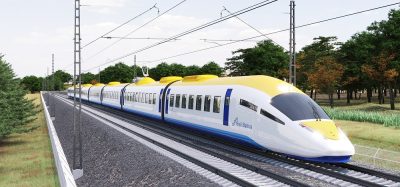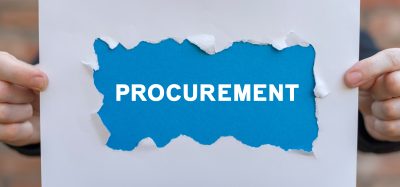A dedicated forum for the Scandinavian region
Posted: 31 May 2010 | | No comments yet
High-speed railways, major infrastructure projects, development and investment plans and market liberalisation were just some of the important topics highlighted and assessed during Global Railway Review’s recent conference – Scandinavian Rail Development 2010.
Held in the stunning city of Stockholm, Sweden, at the Operakällaren, Global Railway Review welcomed over 120 delegates and speakers to share and discuss knowledge of the Scandinavian railway marketplace – a region with many plans for investment and development to build and improve on its current rail infrastructure.
High-speed railways, major infrastructure projects, development and investment plans and market liberalisation were just some of the important topics highlighted and assessed during Global Railway Review’s recent conference – Scandinavian Rail Development 2010. Held in the stunning city of Stockholm, Sweden, at the Operakällaren, Global Railway Review welcomed over 120 delegates and speakers to share and discuss knowledge of the Scandinavian railway marketplace – a region with many plans for investment and development to build and improve on its current rail infrastructure.
High-speed railways, major infrastructure projects, development and investment plans and market liberalisation were just some of the important topics highlighted and assessed during Global Railway Review’s recent conference – Scandinavian Rail Development 2010.
Held in the stunning city of Stockholm, Sweden, at the Operakällaren, Global Railway Review welcomed over 120 delegates and speakers to share and discuss knowledge of the Scandinavian railway marketplace – a region with many plans for investment and development to build and improve on its current rail infrastructure.
The Conference began with a Keynote Welcome from Jan Forsberg, President and CEO of passenger train operator SJ AB who were also the Hosts of Scandinavian Rail Development 2010. Mr. Forsberg said it was “a privilege to open the seminar” and he went on to explain the 3-steps for deregulation, how SJ is preparing for competition and also the important need for infrastructure investments. Mr. Forsberg commented on how important the rail network is for Sweden and that he “hopes the country enters a high-speed future.”
Michael Robson, Secretary General of EIM was the Chairman for Day One of the Conference and he commented on Mr. Forsberg’s speech by saying it was a “superb introduction and profitable look into the future of SJ.”
Sören Belin of Future Rail Sweden took to the stand and expressed that he was “delighted to address delegates” to introduce his association which promotes rail as the primary transport infrastructure for passenger and freight. He explained how Future Rail Sweden wants to see more infrastructure capacity in general and to see the establishment of a high-speed railway and to get the system built, its connections to other transport modes and the European network.
Klaus Wåhlberg, President of Bombardier Transportation Sweden AB, gave a comprehensive presentation about his company which included details of their Swedish marketplace and also how their “broad portfolio” of trains can cope with the Nordic weather conditions. Bombardier was also the Platinum Sponsor of the Conference.
Next to the stand was an interesting presentation about Trafikverket, which at the time of the Conference, was only 27 days old! Sam Berggren, Head of Machinery for the new Swedish Transport Administration, expressed details about building high-speed lines in Sweden and the importance of vehicles, infrastructure, operations, maintenance and systems engineering. He finished by commenting that “we must have a realistic expectation and approach.”
Lars Kleppe, was next to present his companies view on the future of high-speed developments from a European perspective, and of course, commenting on references in Scandinavia. A question from the audience prompted Mr. Kleppe to elaborate on the topic of ensuring trains are designed to withstand harsh winter conditions. Mr. Kleppe explained that both rolling stock and infrastructure have to work together in harmony to combat winter operations. Alstom was a Sponsor of the Conference.
Michael Robson, Chairman for the Day took to the stand next with a presentation entitled, ‘The Infrastructure Managers’ Role in Delivering High-Speed Rail.’ Mr. Robson commented that high-speed rail has the opportunity to interface with other transportation modes and that growing concerns over the environment are also playing a huge part in securing high-speed line developments.
Lennart Westberg was next reporting on the experience of the Botniabanan Project which is to be completed by August 2010. This presentation was effective for delegates to learn about the experiences of constructing a new modern railway system and to understand what worked well and what they would have done differently.
After a networking lunch, Stefan Knittel, Technical Director of Rhomberg Bahntechnik GmbH (a Sponsor of the Conference) was next to the stand with a technical presentation to explain slab track technology and the sustainable solutions for high-speed lines. Mr. Knittel compared the different technical benefits of slab track technology to ballasted track and ended his presentation by giving a list of European slab track installation references.
Jan Schneider-Tilli, Project Director, Railway, Femern A/S then gave a presentation about the Femern Project – a fixed link to close the gap in road and rail infrastructure and fill the missing link between Denmark and Germany. Closing this gap will not only improve Denmark’s access to Europe, but it will have positive consequences for the whole of the Scandinavian Region.
Florian Bussert, Business Manager for Northern Europe at Tensar International Ltd, was next and gave a presentation about geogrids in railway applications and explained that his companies products are used in a wide range of applications including ballast and subballast stabilisation, noise barriers and reinforced structures under/adjacent to railway tracks. Tensar International Ltd was a Sponsor of the Conference.
Gunnar Malm, Director General of Trafikverket took to the stand next declaring it was “a pleasure being at the Conference and a great opportunity to explain the new Trafikverket,” which is a public authority that takes on responsibility for long-term planning of the transport system for road, rail, maritime and air traffic.
Turning to Denmark, Carsten Falk Hansen, Director of Trafikstyrelsen, gave an overview of his country’s Public Transport Authority, and he looked at the current main objectives of Trafikstyrelsen with highlights of current Danish rail projects and the rail sector in general.
To follow was a Panel Discussion made up of Day One’s speakers. Topics and questions raised here included:
- Improving infrastructure efficiency
- Would contracting out maintenance and renewals improve efficiency?
- Financing of the Fehmen Belt and user charging
- Making high-speed trains more reliable in adverse winter conditions
- Budget constraints on constructing high-speed lines
To end Day One, a drinks reception was held where speaker and delegates could network in a relaxed atmosphere.
Day Two was Chaired by Jonas Nilsson, Head of Public Affairs for SJ AB. But is was Sven- Håkan Nilsson, Director of the Swedish ERTMS Programme at Trafikverket, that took the stand first to discuss ERTMS benefits and strategy of implementation, deployment plan and status and lessons to be learnt.
Next was Andreas Wik, Project Program Manager ERTMS Wayside, Rail Control Solutions Bombardier Transportation Sweden AB. Mr. Wik explored the benefits of early deployment of ERTMS.
Martinus Grimsmo, Technology Manager at Jernbaneverket was next with a presentation entitled “Telecom Network Development for Future Railway Needs” followed by Marc Lauwers, Customer Solution Manager at Nokia Siemens Networks, whose presentation looked at ETCS over GPRS. Nokia Siemens Networks was a Sponsor of the Conference.
Next was Jan-Erik Nilsson, Professor of Transport Economics at VTI (Swedish National Road and Rail Transport Research Institute). “Provision of non-commercial railway services in Sweden” was the title of his presentation which analysed, among other topics, annual traffic growth between rail and road and financing public transport.
Chris Nash, Research Professor from the University of Leeds’ Institute of Transport Studies. Mr. Nash said he was actively working with Jan-Erik Nilsson to research and compare the competition in rail passenger services between Britain and Sweden.
Gunnar Alexandersson, Senior Advisor at ASTOC took to the stage next with a presentation entitled “Railway Deregulation in Sweden – Recent Development and Future Outlook” which touched on some obstacles such as capacity constrains and cost increases.
Next was Elisabeth Lindgren, Vice President of Communications at SJ AB, who gave some truthful comments about the recent situation SJ faced with the severe winter-weather conditions. “Customers said we did not deal great with the situation – and I agree – but we are working hard to rectify the problems so we can cope better in the future.” Ms. Lindgren explained that the company’s dynamic pricing model has “been a great success” and they are doing many things to convince the public of how good it is to travel by train rather than the car. “We want to be seen to be providing great services for passengers and it is something we are working hard to promote. We must change from operating trains to serving people – which I believe is the most important ‘journey of change’” said Elisabeth.
The final presentation came from Magnus Axelsson from Sweden’s Ministry of Enterprise, Energy and Communications, Division for Transport, who explained to delegates the National Plan for Sweden’s transport system between 2010 and 2021.
Global Railway Review would like to thank all speakers and delegates for their involvement, plus the support of the Sponsors, Exhibitors and the Host. We look forward to welcoming you to a future Global Railway Review event.







